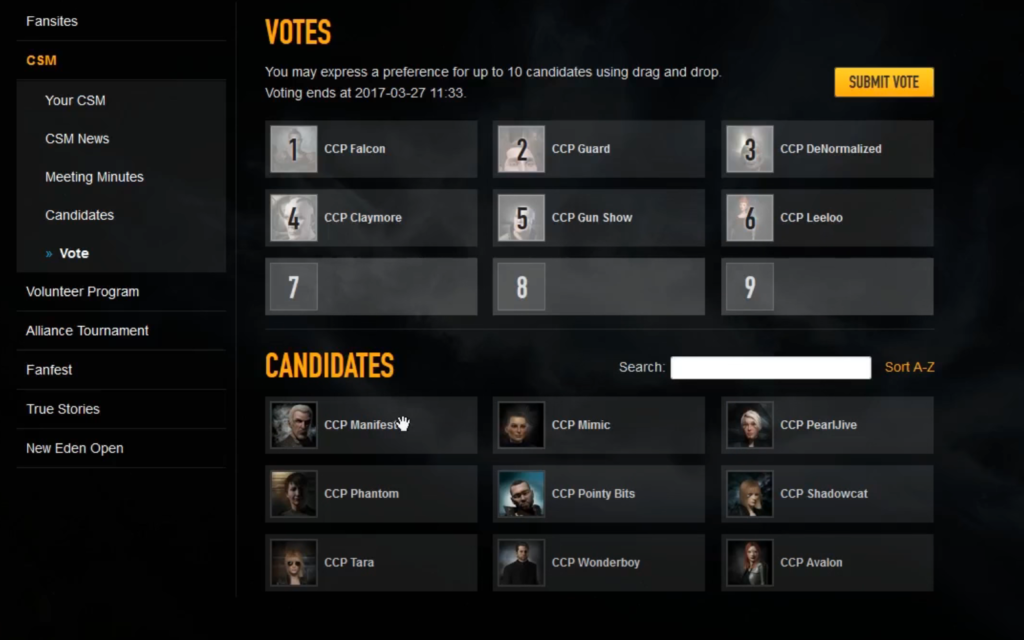Last Updated on 2024-05-09 by Kshal Aideron
You can vote for the first time this year in the CSM elections, and you’re not sure what to expect. How do you cast your vote? How many candidates can you support? Let’s discover how it all works!
Who’s Eligible to Vote for CSM
If you have an account, which has been Omega for 60 or more days, you are eligible to vote for CSM 18.
If I Have Multiple Omega Accounts, Do I Vote With Each One?
Voting is based on account, not character or linked accounts. So if you have 10 separate accounts that are Omega, you can vote 10 times.
How Many CSM Candidates Can I Vote For?
You can vote for up to 10 candidates. Your first choice receives the most weight, and your 10th choice receives the least. However, if one of your chosen candidates wins a seat or gets eliminated, your vote automatically shifts to your next preferred candidate. So every vote counts! Keep reading to understand the details of the voting system.
Make sure to select 10 candidates to maximize the likelihood the CSM you want get on the council, or those representing the ideas you want looked after make it.
What Does Voting Look Like?
As soon as voting opens in the CSM Portal, a random order of all the candidates greets you.
If you know who you want to vote for, you can search for them by name. Or you can sort the candidates alphabetically by clicking on the sort A-Z.
When you find someone you want to take the #1 position, click them. Continue on from the 2nd to 10th!

How the STV System Will Work During CSM Announcements
So, you know that if you’ve been Omega for at least 60 days (2 months) you can vote up to 10 candidates.
When it’s time for announcements, you’ll get to see the STV System (single transferable vote) in action.
What is the STV System and Who Actually Uses It?
The STV system is a legitimate voting method used in real-world elections. This electoral system allows each voter to make multiple choices on the ballot.
To win a seat, a candidate needs to secure enough votes to meet the Quota. The Quota combines the number of open spots (10) with the total number of votes cast. The system then proceeds through rounds, eliminating the candidate with the fewest votes and advancing those who meet the quota.
If a candidate wins a seat and has extra votes beyond the quota, those extra votes transfer to the next preferred candidates on the voters’ ballots. The same process occurs when a candidate gets eliminated. The video below offers a visual explanation of the STV system.
So, who actually uses this in the real world? Australia, Ireland and Malta use the STV system for their national elections. In addition to these 3 countries, New Zealand, the UK and United States also use it for local government elections as well. It’s not not a fantasy election system for a space video game!
What Will the STV System Look Like for the CSM Elections?
So for the CSM elections, we will get to see the total number of votes which will give us the round 1 quota.
Anyone who made the quota in round 1 will be promoted and the candidate with the least amount of votes will be eliminated. Then all the votes for those who were elected that are over quota will move to the number 2 spot on the voters ballot and all the votes for the person eliminated will also go to the #2 spots.
Each round the quota will drop as votes drop as candidates are elected or drop out. The process will continue until there are 10 spots filled and the CSM council has been chosen.
THIS is why voting for all 10 spots on your account(s) ballots is important!

